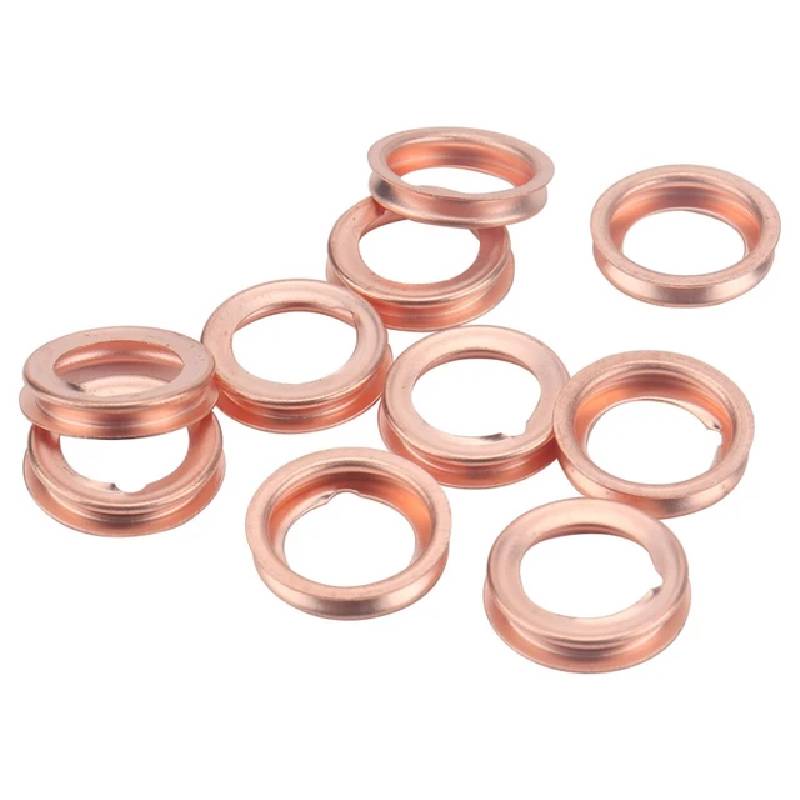radial oil seals
Understanding Radial Oil Seals Function, Types, and Applications
Radial oil seals, also known as radial shaft seals, play a crucial role in various mechanical systems by preventing the leakage of lubricants and contaminants. They are widely used in industries ranging from automotive to manufacturing, where machinery components rely heavily on effective sealing solutions. This article aims to provide a comprehensive overview of radial oil seals, their functions, types, and applications.
At its core, a radial oil seal is designed to fit around a rotating shaft, providing a barrier that keeps lubricants inside while blocking contaminants such as dirt, dust, and water from entering the system. The seal typically comprises a flexible elastomeric material, often reinforced with a spring, which maintains contact with the shaft. This design allows for a reliable sealing action even under varying operational conditions, such as changes in temperature, pressure, and shaft speed.
One of the key functions of radial oil seals is to reduce friction and wear between moving parts. By keeping lubricants contained, they help maintain optimal operating conditions within machinery, which can significantly extend the life of components and reduce maintenance costs. Furthermore, preventing contamination from the outside environment is vital for ensuring the reliability and efficiency of machinery.
Radial oil seals come in various designs and materials to suit different applications. The most common types include single-lip seals, double-lip seals, and multi-lip seals. Single-lip seals feature one sealing lip, while double-lip seals provide an additional layer of protection, enhancing their ability to trap oil and block contaminants. Multi-lip seals, on the other hand, include multiple sealing elements that offer even greater efficiency in preventing leakage.
radial oil seals

The materials used for radial oil seals also vary, typically including nitrile rubber (NBR), silicone, fluorocarbon (FKM), and polyacrylate, among others
. The choice of material often depends on the specific operating conditions, such as temperature resistance and chemical compatibility, as different applications may expose seals to various oils, solvents, or extreme temperatures.Radial oil seals find applications in numerous fields. In the automotive industry, they are commonly used in engines, transmissions, and drivetrain components, where they help prevent oil leaks and ensure smooth operation. In manufacturing machinery, these seals are vital for hydraulic systems, pumps, and gearboxes, protecting against lubricant loss and environmental contamination. Furthermore, radial oil seals are essential in agricultural equipment, aerospace applications, and many other fields where machinery operates under demanding conditions.
The installation of radial oil seals is an important aspect of maintaining their effectiveness. Proper alignment and fitting are essential to ensure that they function correctly and achieve desired performance levels. Installation errors, such as misalignment or excessive compression, can lead to premature failure of the seal, resulting in leaks and costly repairs.
In summary, radial oil seals are indispensable components in the world of machinery and mechanical systems, designed to effectively contain lubricants while preventing contaminant ingress. With various types and materials available, these seals can be tailored to meet the specific requirements of different applications. Understanding their function, types, and proper installation techniques can enhance machinery performance and longevity, making them an essential consideration for engineers and equipment operators alike.
-
Seal 12x20x5: Precision Radial Shaft Seals for Industrial Reliability
News Nov.24,2025
-
Seal 12x18x5: Essential Guide to Specifications, Applications & Vendors
News Nov.24,2025
-
Understanding Seal 12 20 5: Applications, Specifications & Industry Insights
News Nov.23,2025
-
Durable Oil Seal 85x110x12 – Reliable Sealing Solutions for Industry
News Nov.23,2025
-
Durable and Precise Oil Seal 75x95x10 for Efficient Machinery | YJM Seal
News Nov.22,2025
-
Durable Oil Seal 75x100x10 for Reliable Industrial Performance | YJM Seal
News Nov.22,2025
-
High-Quality Oil Seal 65x90x10 | Durable & Reliable Sealing Solutions
News Nov.22,2025
Products categories















